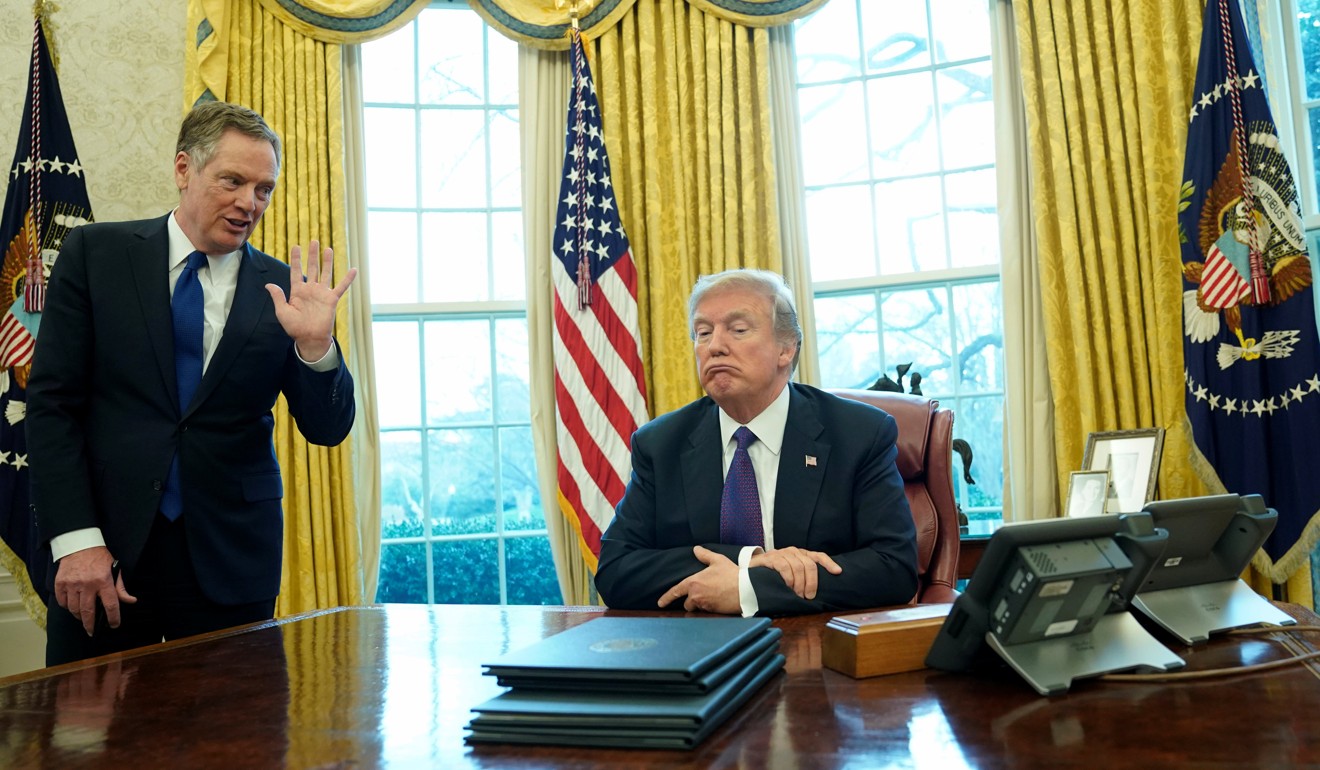
Expect confrontation as ‘old trade warrior’ Robert Lighthizer takes on China, observers say
Known for his tough stance on Japan in the 1980s, the US trade representative will soon release the results of a probe into China’s business practices
When Robert Lighthizer was sworn in as US trade representative in May, the United States and China were widely expected to move towards a more confrontational trade relationship.
Lighthizer is known for his tough handling of trade between the United States and Japan in the 1980s. And observers say that unlike US Commerce Secretary Wilbur Ross and economic adviser Gary Cohn, who are seen as more accommodating, Lighthizer appears to hold huge sway over US-China trade policy under President Donald Trump.
“He [Lighthizer] knows trade remedies quite well. His team is not so much big but is very powerful,” according to a representative of the American business community in China who was speaking on condition of anonymity. “The trade confrontation between China and the US is set to heat up.”
Trump threatened to take tough trade actions against China during his election campaign, vowing to name Beijing a currency manipulator. Tensions over trade in the first months of the Trump presidency, however, were often overshadowed by Washington’s call on Beijing to step up pressure against North Korea.
But with his tax cuts passed, and frustrated that China has not done enough to rein in Pyongyang’s nuclear ambitions, Trump’s hardline stance on trade has resurfaced.

After scant progress was made in the first round of Comprehensive Economic Dialogue with Beijing in July – aimed at resolving trade issues – the US suspended the high-level talks.
“The combative Lighthizer is now firmly in control of the international trade and economics agenda,” said Arthur Kroeber, a founding partner with Gavekal Dragonomics.
“It was only in the second half of last year that the US Trade Representative Robert Lighthizer wrested trade policy from more accommodating figures like Commerce Secretary Wilbur Ross and economic adviser Gary Cohn,” Kroeber said, describing Lighthizer as an “old trade warrior who cut his teeth battling Japan in the 1980s”.
Lighthizer spent more than 30 years as an international trade lawyer in the heavy manufacturing, agricultural and hi-tech industries. He served as deputy US trade representative for former president Ronald Reagan and negotiated over two dozen bilateral international agreements, including on steel, auto and agricultural products.
But he is best known for pressuring Japan to reduce steel and auto exports to the US by restricting its shipments of electronic and agricultural products with punitive tariffs and quotas – an action that could be part of Trump’s trade moves against China.
Lighthizer is also on board with Trump’s “America First” policy and shares the US president’s wariness towards multilateral trade deals. He has lashed out at China’s economic model, saying it was an unprecedented threat to the world trading system in September. That was a month after his office launched an investigation into China’s alleged intellectual property theft under section 301 of a rarely used 1974 trade law.
In November, his office formally notified the World Trade Organisation that the US opposed granting China market economy status, provoking Beijing’s ire.
The trade representative is expected to release in the coming weeks an assessment of damage to US business from China’s alleged intellectual property theft, forced technology transfers and discriminatory innovation policy following an investigation.
He Ning, a former minister for trade and economic affairs at the Chinese embassy in the US, expected Lighthizer would “find fault” with trade ties rather than seek cooperation.
He, who is now a senior researcher at the Centre for China and Globalisation, a think tank in Beijing, said Trump had continued to test China’s “bottom line” and more friction over trade was inevitable.
But Lu Xiang, a specialist on US issues at the Chinese Academy of Social Sciences, noted that China is not Japan in the 1980s, given its scale as the world’s second-biggest economy after the US.
“The US wouldn’t be able to bear the damage caused by a trade war,” he said. “The global economic structure means that the US actually has to accept this trade deficit. Cooperation to make sure there are bigger slices of pie to go around is really the only solution to this problem.”
China should also do more to open its markets to build trust with countries such as the United States, according to Huo Jianguo, a former research chief with the Ministry of Commerce.

